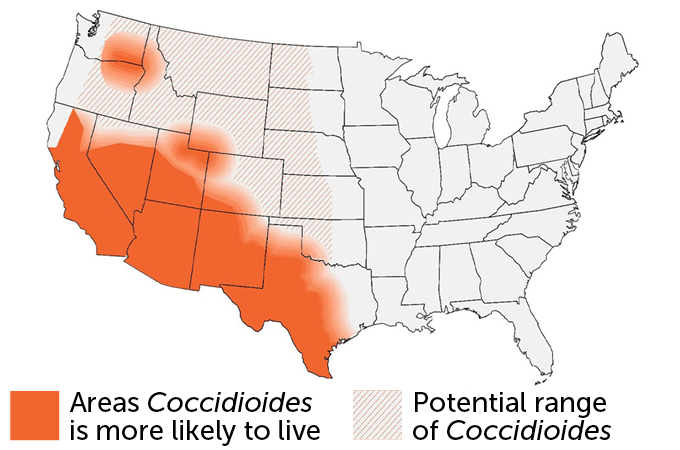The long drying period can promote a deadly fungal disease.
While California’s droughts can temporarily hold back cases of valley fever—a sometimes deadly disease caused by Coccidioides fungi — relatively low, cases skyrocket when rain clouds return, researchers reported in October Lancet Regional Health – Americas.
Valley fever is on the rise across parts of the western United States, spreading through airborne fungal spores (SN: 1/4/23). Although most people who breathe in the spores will not get sick, those who do develop respiratory symptoms such as coughing and shortness of breath. In severe cases, the fungus can cause long-term lung problems or invade other parts of the body.
Knowing when the valley fever season begins can help public health agencies target their warnings and identify when doctors should be on alert for new cases, says Justin Remais, an environmental health researcher at the University of California, San Francisco. , Berkeley.
“Some infectious diseases are known to be amplified by drought conditions,” says Remais. To determine if the same is true for valley fever, Remais and colleagues analyzed climate data and all reported cases in California from 2011 to 2021.
Cases tend to peak between September and November, the end of California’s dry season, the team found. Smaller seasonal peaks occurred during the drought, but those grown a year or two after the rains returned ended the drought.
The reason for the pattern is unknown. Coccidioides populations can crash during drought, helping surviving spores to thrive with less competition in wet weather. A lack of rain can also kill rodents that carry the fungus, providing fungal nutrients from decomposing animals, or increase the amount of dust, spreading spores that the moisture brings back to life.
It is unclear whether the droughts are affecting the increase in cases in other states such as Arizona, the US hot spot for valley fever. And as droughts worsen and rains become heavier with climate change, more people may be at risk (SN: 1/10/23).
“We need to better understand how these pathogens are adapting to new environments in order to better prevent infection and protect those at risk in the decades to come,” says Remais.
#California #droughts #spread #valley #fever
Image Source : www.sciencenews.org
